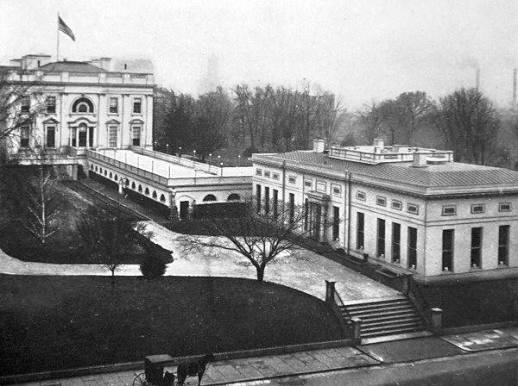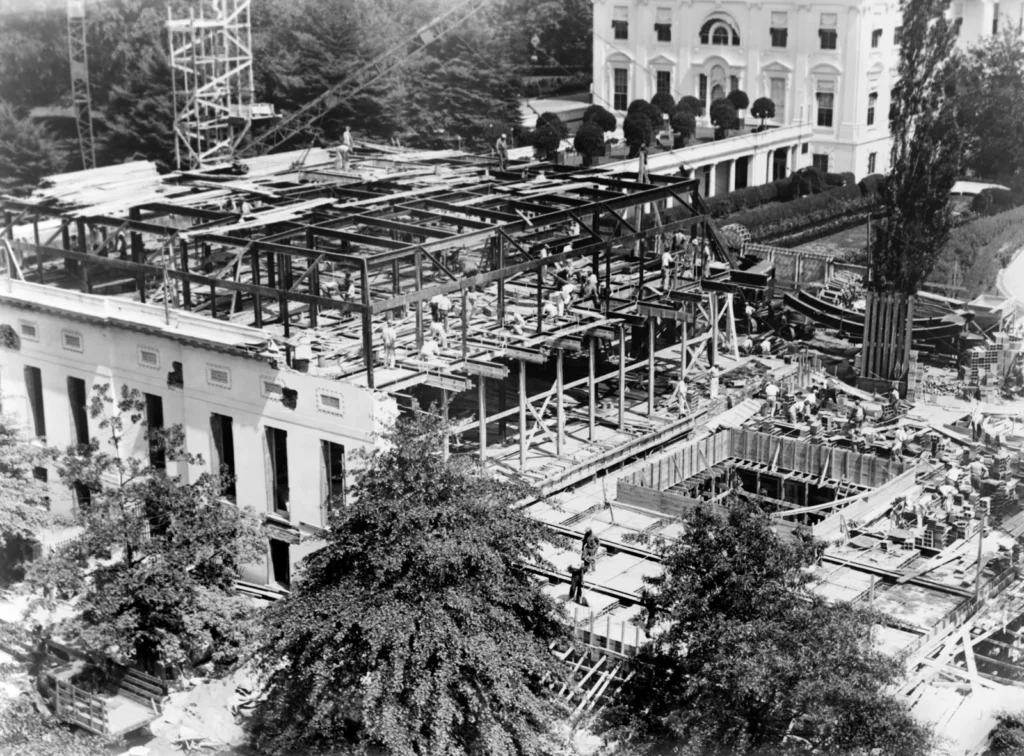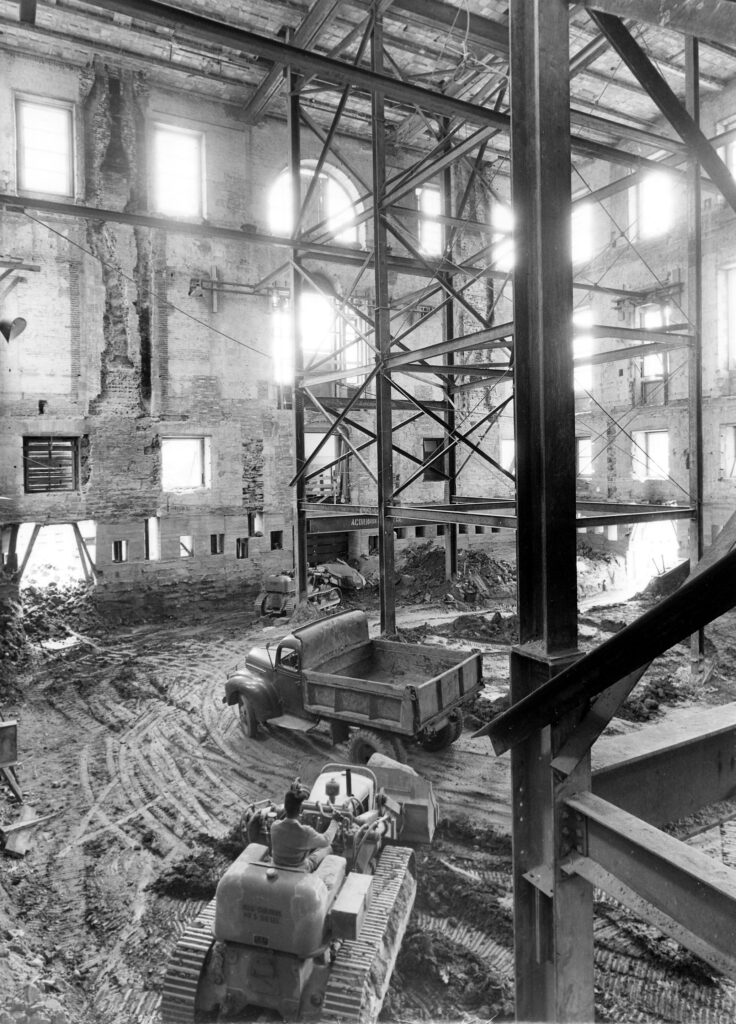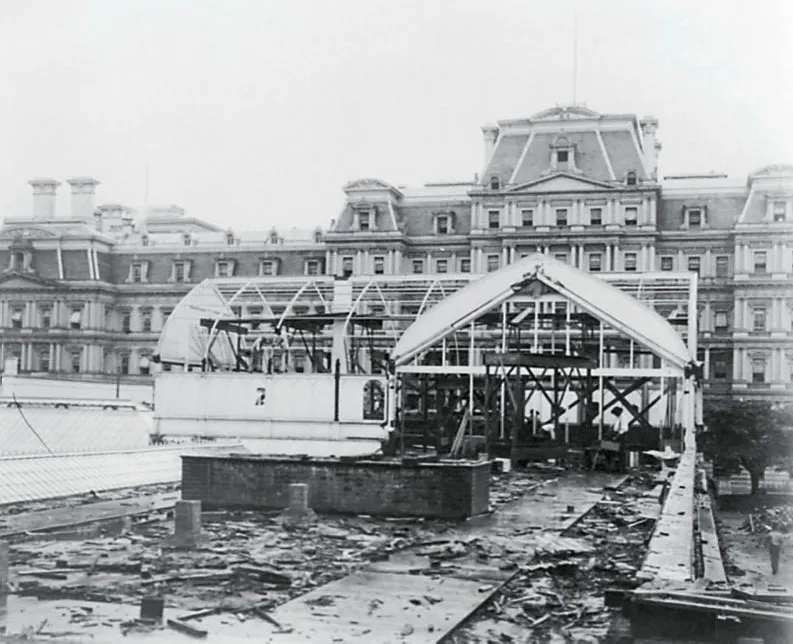You know, I’ve just about had it with this latest round of Trump Derangement Syndrome coming out of Washington and the media echo chamber — all because President Donald J. Trump is building a privately funded ballroom at the White House. You’d think he was bulldozing the Lincoln Bedroom with his bare hands the way they’re carrying on. Let’s get a grip, folks. Every modern president has added, renovated, rebuilt, or repurposed parts of that house — it’s what presidents do. Teddy Roosevelt built the West Wing, Taft gave us the Oval Office, FDR added a pool and expanded the East Wing, Truman gutted and rebuilt the entire interior. Nixon turned that pool into the press briefing room, Obama built a basketball court, and now Trump’s adding a ballroom — privately funded, by the way — and somehow that’s the outrage of the week? Give me a break.
And here’s where the hypocrisy really takes center stage. The same media that’s in hysterics over Trump’s ballroom had no problem when the Clintons were literally renting out the Lincoln Bedroom to big donors — hundreds of them — people who cut six-figure checks to sleep in the People’s House. Remember that? Nearly a thousand guests, six million dollars raised for the DNC, and not a single front-page scandal. That’s not “modernizing” — that’s monetizing. And let’s not forget, when the Clintons left the White House, they took $28,000 worth of furnishings that were later returned after it turned out the items belonged to the American people. Yet somehow, building a privately funded ballroom — which adds value, not takes it — is where the media draws the line? That’s rich.
Let’s get something straight: this ballroom project isn’t some ego-driven palace addition. It’s something both parties have wanted for decades — a proper, secure, indoor event space for state dinners, national ceremonies, and diplomatic events. Every president since Reagan has said the same thing: the White House needs it. But none of them did it. Trump looked at the inefficiency, found private funding, and made it happen — without costing taxpayers a single dime.
Meanwhile, the same crowd that cheered Obama’s basketball court and looked the other way when the Clintons turned the Lincoln Bedroom into an ATM machine now clutches their pearls because Trump’s ballroom might actually make the White House more functional. Spare me. Either you respect the history of presidential renovations, or you admit your outrage has nothing to do with architecture — it’s about Trump.
Here’s the bigger picture, my friends: the White House has never been frozen in time. It burned to the ground in 1814 and was rebuilt. Roosevelt, Taft, FDR, Truman — every one of them left their mark. That’s not desecration; that’s history in motion. What Trump is doing fits right into that long line of presidents shaping the People’s House to meet the needs of their era. The only difference is — he’s paying for it privately.
And that’s what really drives them crazy. Because Trump’s ballroom doesn’t fit the D.C. model — no taxpayer tab, no bureaucracy, no waste. Just results. And that’s what the establishment can’t stand: a president who builds efficiently and proves that private enterprise can still outpace government red tape.
So let’s call this out for what it is — not an architectural scandal, not even a story — just another case study in Trump Derangement Syndrome. The critics don’t care about tradition, or precedent, or even propriety. They only care that Donald Trump is the one holding the shovel. And once again, he’s the only guy in Washington actually getting something built.
But Trump builds a ballroom — funded privately, by donors who love the country, not out of the public coffers — and suddenly it’s “authoritarian,” “extravagant,” “self-serving”? No. What it is, is American. It’s initiative. It’s private enterprise solving a public need. It’s efficiency over bureaucracy. And that’s exactly why they hate it — because it reminds the D.C. establishment that Trump doesn’t play by their wasteful, taxpayer-funded rules.
The White House has been altered repeatedly since its construction in the 1790s: it was burned by British forces in 1814 and subsequently rebuilt; Theodore Roosevelt’s 1902 modernization created the West Wing; William Howard Taft added and formalized the Oval Office in 1909; Franklin D. Roosevelt expanded and reconfigured the West Wing and added amenities (including an indoor pool) in the 1930s; a catastrophic structural crisis led Harry Truman to gut and rebuild the interior from 1948–1952; later presidents repurposed spaces (Nixon built the press briefing room over the old pool in 1970) and modernized grounds and amenities (including a dual tennis/basketball court under Obama). In 2025 the White House announced a large, privately funded ballroom project that would represent the most extensive new addition in decades.
- The White House has been continually adapted to meet the needs of modern executive government — incremental change, not immutability.
- Fires and structural failure (1814, 1929, and the mid-20th-century crisis) show the practical necessity of maintenance and responsible stewardship of public property.
- Roosevelt and Taft’s early 20th-century changes reflect evolving executive functions — offices moved out of the residence to protect both family privacy and administrative efficiency.
- Truman’s reconstruction (1948–52) was driven by safety and engineering necessity, not aesthetics — an example of government spending to preserve a national asset.
- Repurposing spaces (Nixon’s press room over the old pool; Ford’s outdoor pool; Obama’s basketball lines) underscores how presidents use available authority to modernize the estate for official and unofficial duties.
- Large new additions — like the 2025 privately funded ballroom — raise questions about oversight, historic-preservation norms, and whether private funds can or should alter national landmarks.
Deep Dive
- 1814 Burning and Rebuild: During the War of 1812 British forces set fire to the Executive Mansion (Aug. 24, 1814). James Hoban (the original architect) oversaw rebuilding; rebuilding was both practical and symbolic — restoring the federal seat of government. This established a precedent for rapid post-crisis reconstruction paid for by Congress and local effort.
- Teddy Roosevelt (1902): Roosevelt ordered a major modernization to make the mansion function as a 20th-century presidential house. Architect Charles McKim reorganized public and private spaces and erected the first West Wing “executive” offices so that the residence and work areas were separated. This marked a shift toward a professionalized executive staff.
- Taft and the Oval Office (1909): Taft expanded the West Wing southward and had an architect (Nathan Wyeth) create the first dedicated Oval Office space; the Oval’s form follows earlier plans but became the institutional symbol of presidential authority and privacy for official business. The Taft-era work formalized the presidency’s physical footprint.
- FDR (1933–34): Roosevelt’s West Wing expansion and reconfiguration (including moving the Oval Office and building the East Wing additions) reflected operational needs of a president with a larger administrative apparatus and special accessibility needs (FDR used a wheelchair). The indoor pool was added as a private amenity for the president’s health and recreation.
- 1929 West Wing Fire: A Christmas Eve 1929 blaze damaged the West Wing and prompted rebuilding/repairing of executive office spaces — a reminder that fires have periodically driven renovations.
- Truman Reconstruction (1948–52): Engineering surveys revealed the Executive Residence was structurally unsound; Truman moved to Blair House while the interior was gutted and rebuilt with a structural steel frame. The exterior façades were preserved while the interior was modernized — the cost and scope were considerable and controversial at the time. This is the closest modern parallel to a “rebuild,” not merely renovation.
- Post-Truman Adaptations: Nixon transformed the indoor pool area into the modern press briefing room (opening in 1970) to accommodate television era media; later presidencies added outdoor amenities and repurposed grounds (e.g., Ford’s pool; Obama adapting tennis court for basketball). These are examples of functional adaptation rather than structural rebuilds.
2025 Ballroom Project: Public reporting (AP and White House statements) describe a privately funded, large ballroom project proposed to expand East Wing function and event capacity. The project has prompted debate about historic-preservation review, scope of executive authority, and the role of private funds on federally owned historic property — important governance and transparency issues.





